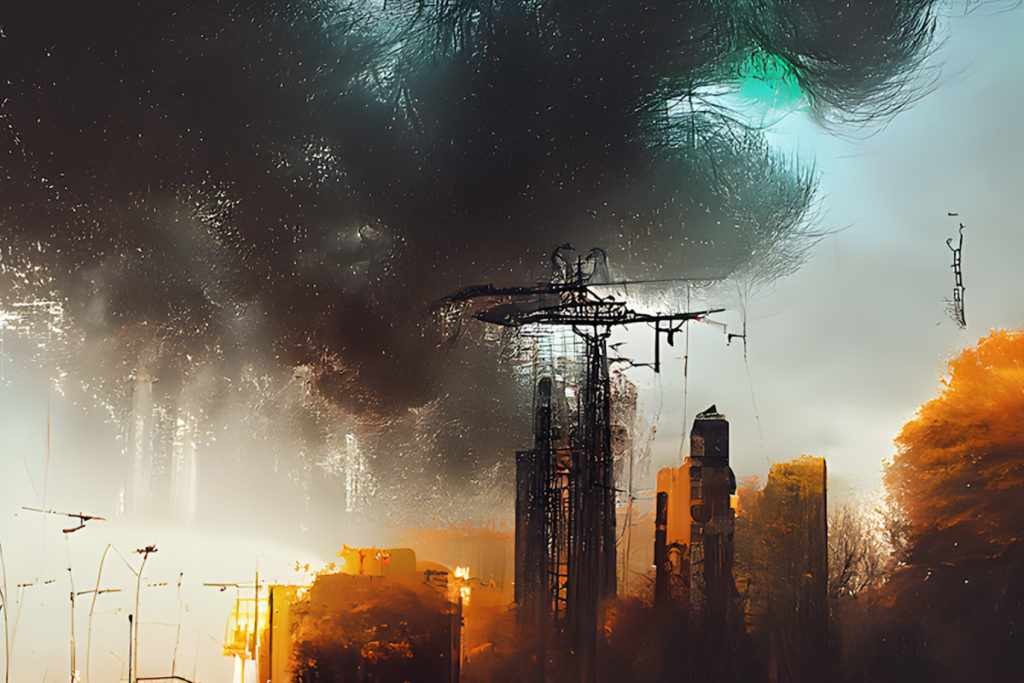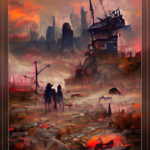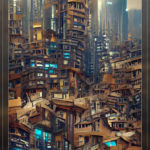Art created by artificial intelligence (AI) is certainly not new. The process itself can be traced as far back as the late 1960s with the AARON system developed by Harold Cohen, but the practice has exploded in popularity in recent years.
After an AI artwork sold at a Christie’s auction in 2018 for over $432,000 US, people began paying serious attention to the possibilities.
If you’re unfamiliar with AI art, here’s the basic premise: it’s magic. No, but seriously, it’s some crazy stuff. It involves computers using a convolutional neural network to learn and create entirely new visuals from enhanced patterns in existing images.
Google created its own AI art tool called DeepDream in 2015 that over-processes Google images to create new images, and a 2021 OpenAI algorithm called DALL-E was one of the first to use text prompts to create new works of art.
This brings us to our current AI art scene that involves mobile apps and the ability to make unique NFT artwork in minutes. I tested out a handful of these apps on my iPhone to see which ones I liked the best. While they all had their pros and cons, there were two definite stand-outs: Dream by WOMBO and the fairly new StarryAI.
Dream by WOMBO
While I can’t really say if one of these two apps is better than the other, Dream has a lot going for it. It’s free, very easy to use, and QUICK.
You simply type in your text prompt, choose an art style, and click “Create” to brew up your masterpiece. You have the option to add a starter image to base the artwork on, but I found it way more fun to let the AI do its work on its own.
You can save your art in your own little art gallery (complete with frames) or share with your friends. You can also purchase a print of your art directly from the app, which is probably the biggest strong-point of this one.
Check out a few of my creations in Dream:
StarryAI
StarryAI is not as quick as Dream (StarryAI produces art in several minutes while Dream only takes seconds), but I found that StarryAI has more features to really fine-tune your work.
To create on StarryAI, you enter your text prompt, choose whether you want the artwork to be Altair (abstract and dream-like) or Orion (more cohesive images), then choose from a variety of style extras. You can pick your art style (arranged by classic artist name), art movement era, simulated texture (like glass, plastic, liquid metal, etc.), and finally, your medium (Acrylics, watercolor, graffiti, etc.).
As you can see, StarryAI lets you have way more control over the finished product. But possibly my favorite part of StarryAI is that the images can be much higher resolution. I say “can” because the whole thing works on a system of credits. You earn credits by watching ads or sharing to your various social media, and in return, you get to create more images and upscale them to a larger, printable size. You also get 5 free credits a day and can purchase credits as well.
The header image on this article was produced in StarryAI, and here are a few of my other favorites:
Both apps have a strong Discord community (StarryAI‘s is brand new, but growing quickly), and allow you creative rights to your work. StarryAI goes a step further and even grants commercial rights, with more detailed legalities in the works, according to their website.
So I’m curious to hear what others think of this technology. Is it something that you see as the future of creative expression, or does its speed and ease-of-use bother you? Let us know in the comments below!
Want to chat about all things post-apocalyptic? Join our Discord server here. You can also follow us by email here, on Facebook, or Twitter. Oh, and TikTok, too!











